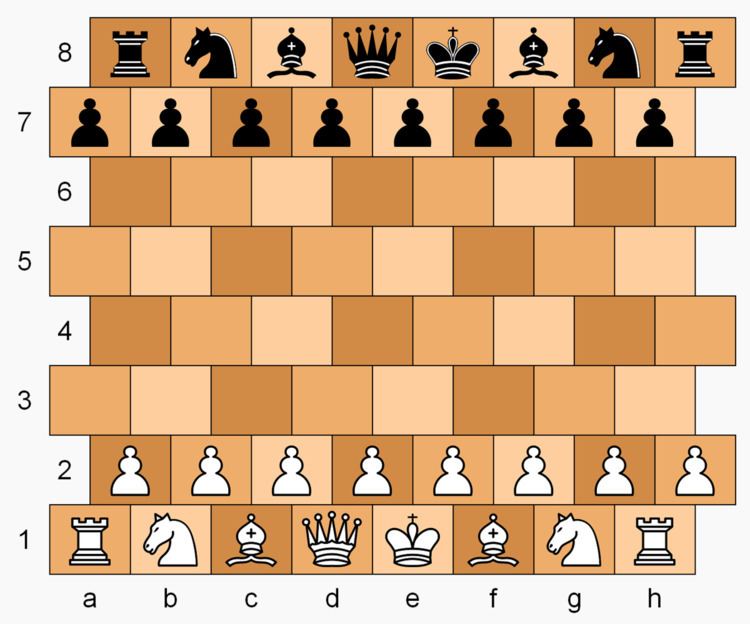 | ||
Masonic Chess is a chess variant invented by George R. Dekle, Sr. in 1983. The game is played on a modified chessboard whereby even-numbered ranks are indented to the right—resembling masonry brickwork. The moves of the pieces are adapted to the new geometry; in other respects the game is the same as chess.
Contents
Masonic Chess was included in World Game Review No. 10 edited by Michael Keller.
Board characteristics
The Masonic board cells are slightly rectangular, and indentation of alternating ranks results in cants (oblique files) 30 degrees from the vertical and diagonals 30 degrees from the horizontal, the same as hexagon-based chessboards when cell vertices face the players. (For example, rooks have six directions of movement, and Masonic pawns move and capture the same as pawns in De Vasa's hexagonal chess. Masonic bishops, however, are limited to the four diagonal directions to the sides.) As with hex-based boards, three colors are used, so no two adjacent cells are the same color, and gameboard diagonals are highlighted.
Game rules
The diagram shows the starting setup. All normal chess rules apply, including conventions for castling either kingside or queenside, a pawn's initial two-step option, en passant captures, promotion, and so on. But the pieces have specially defined moves.
